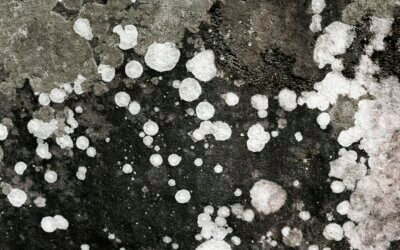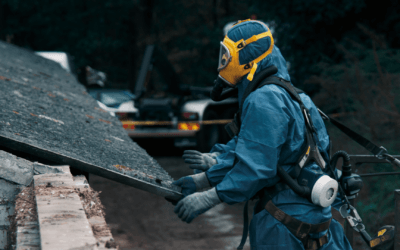Common types of asbestos found in Upper Hutt
May 5, 2025Asbestos is common in homes and commercial buildings in the Upper Hutt. Here are some of the most common types, and what to do if you find it on your property.
Like countries all over the world, New Zealand enthusiastically used asbestos throughout our building materials throughout the 20th century, from roughly the 1920s to the 1980s. As a result, a large number of our commercial and residential buildings still contain asbestos today.
Some types of asbestos are more common in New Zealand than others, so here are some of the most common types of asbestos you might find in properties across Upper Hutt.
Types and sub-types of asbestos
There are two main types of asbestos in the Upper Hutt: Serpentine and Amphibole.
Serpentine asbestos is the kind with curly fibres, and makes up one of the most common types of asbestos in use anywhere; chrysolite. This is the white fibre that many people think of when they think about asbestos.
Amphibole asbestos has needle-like fibres, and there are five sub-types; anthophyllite, crocidolite, actinolite, tremolite, and amosite. Amosite (which is brown) and crocidolite (which is blue), are the most common types of amphibole asbestos.
However, the colour differences can be quite subtle, and only lab analysis can give an accurate reading of which kind of asbestos is present.
Note that asbestos is also categorised into another two types, depending on the condition it is in. Grade A (or Class A) asbestos is the friable kind, which means it is more easily released into the air and is therefore more dangerous. Grade B (also known as Class B) asbestos is non-friable, which means the asbestos fibres are more tightly bound and therefore less likely to cause health problems by releasing into the air. Keep in mind that both kinds of asbestos are still potentially very dangerous in the right conditions.
Where you can find these types of asbestos in Upper Hutt
Thanks to the many fantastic positive properties of asbestos, from its insulating properties to its fire resistant ones, it was used in all sorts of building materials and household goods throughout New Zealand.
Here are some of the most common places you would find asbestos in Upper Hutt building supplies:
- Backing material for floor tiles and vinyl sheets
- Asbestos-cement sheet cladding, roofing and drainage pipes
- Insulation board, such as those around fireplaces
- Textured ceilings (often known as popcorn ceilings)
- Lagging for insulation around pipes, hot water cylinders, and heaters
It may also be worth checking the age of various common household items, as some of these also used to regularly contain asbestos. These include:
- Oven mitts
- Ironing boards
- Fire blankets
- Simmer mats for stoves
What to do if you think your Upper Hutt property contains asbestos
It’s impossible to tell if your property has asbestos-containing materials just by looking at it. The only way to be sure (and to know exactly what you’re dealing with) is to get professional testing.
We at PRO Environmental Services do not offer professional asbestos testing, but there are plenty of certified companies working in the greater Wellington area that can efficiently test your property and deliver accurate results.
Should your property, either residential or commercial, test positive for asbestos, that’s where PRO Environmental Services can help. We offer timely, expert asbestos removal in Upper Hutt, and we are qualified to remove both Grade A and Grade B types of asbestos. That means we can remove both the friable and non-friable kinds without risking the health and wellbeing of our team, you and your family or colleagues, or anyone visiting the property.
If you’ve had a positive asbestos test in Upper Hutt and need a removalist, get in touch for a free, no-obligation quote, or drop us a line with your questions.
Related articles from our blog
5 Things You Need to Know About Environmental Remediation
Environmental remediation refers to cleaning up contaminants from soil, sediment, and groundwater. Here are 5 environmental remediation facts you need to know.
Effective Mould Prevention in New Construction
Mould prevention begins in the construction stage. Here’s how to prevent mould in new construction, and where to get expert mould removal if you need it.
Environmental Laws and Regulations: How They Protect the Planet
Environmental laws and regulations exist to keep both humans and the environment safe from hazardous materials. We follow them on every project, every time.


